How do you clone tomato plants? Tomatoes are part of the list of the world’s most popular plants and fruits. They are beloved by many cultures, including in Spain, where they have a whole festival dedicated to them!
They are easy to grow, regardless of how much experience you have.
But what if you could make infinite copies of your tomato plant and get them all for free?
Here is how I propagate and multiply my tomato plants.
Table of Contents
Cloning tomato plants
Take a stem cutting to clone a tomato plant, also known as propagating. Then, prepare the cutting with a rooting hormone and place the cutting in water. Wait 2 weeks for the cutting to root fully, then move your new plant into the soil.

Cloning a tomato plant
There are many different methods for cloning a tomato plant, but the method I’m about to show you is the one with which I have had the most success.
First, you need to ensure that the tomato plant you will be making cuttings to clone from is both healthy and mature.
The healthier your tomato plant is, the more success you will have with it propagating it.
Also, a more mature tomato plant is likely not affected when removing parts of it.
1. What you will need
- A healthy and mature tomato plant
- A clean, sharp knife
- Small plastic containers
- Rooting hormone powder or gel (optional)
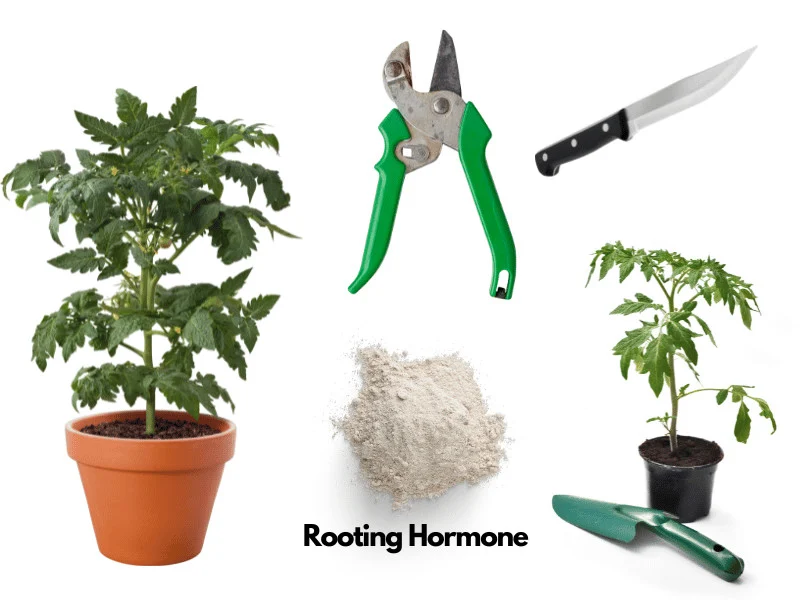
2. Taking cuttings from your plant
Almost any part of your tomato plant could be used in cloning. Be sure to choose a branch of a good size that doesn’t have any blossoms or tomatoes growing on it.
Next, cut the main just below a stem node (or eye) to at least 3 inches.
Many have succeeded by using branches that have fallen off their tomato plant or been pulled off by a child or pet, so you don’t need to put too much pressure on choosing the perfect stem.
It is also very important to sterilize whatever you use to cut the branch, whether simple kitchen scissors or professional pruning shears.
Otherwise, you could risk spreading an infection to your healthy tomato plant and the cutting you have taken from it.
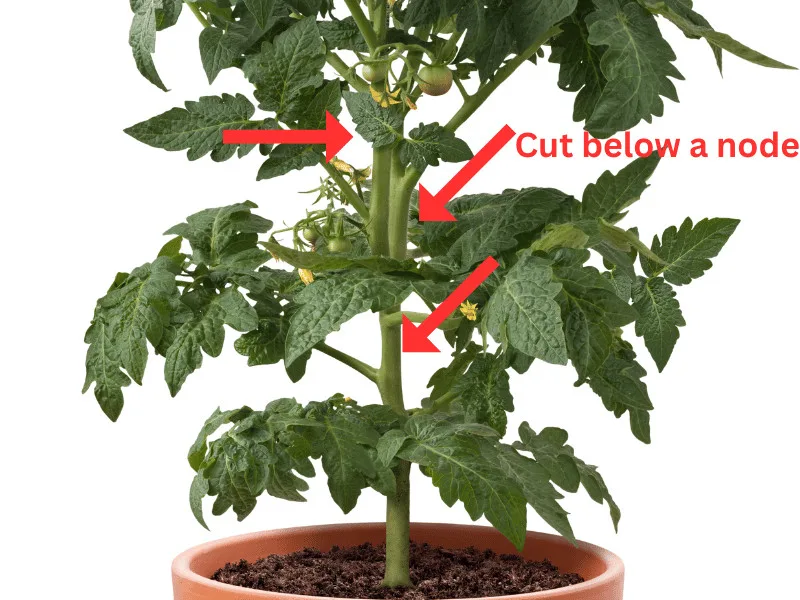
3. Preparing the cutting
The next step is purely discretional, but I found that such a method increased the rate at which my tomato cuttings thrived.
Using a rooting hormone when propagating from cuttings impacts how long the cuttings take to root.
The hormones in it also cause the roots to grow stronger, meaning they are less likely to be affected by diseases during their early growth.
First, I lightly score the stem’s base with scissors or a blade. This will make the rooting hormone take to the stems much more easily.
From here, dip the scored ends into the rooting powder or gel.
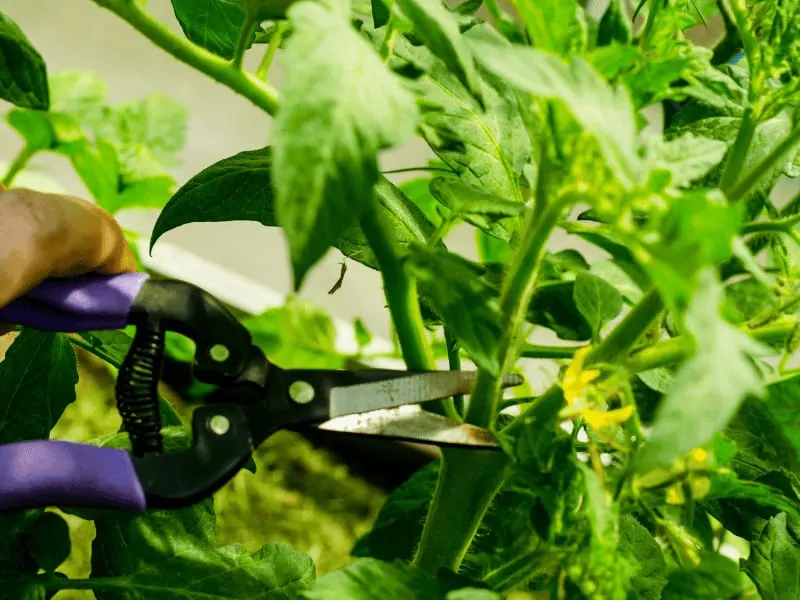
4. Rooting the cuttings in water
Now it’s time to place the cuttings into the water so that they can begin to grow roots.
Some choose to root their tomato plant cuttings in soil, but I think rooting them in water is much easier and quicker.
Start by removing any bottom leaves from the cutting that could come into contact with the water.
Depending on your cutting size, fill your container with 2-4 inches of tepid water, and place your cutting in the stem first.
You should place the container on a windowsill, where it will receive warm and indirect sunlight.
Check the water levels daily and top them up if needed. If the water starts to look dirty, change it to fresh water.
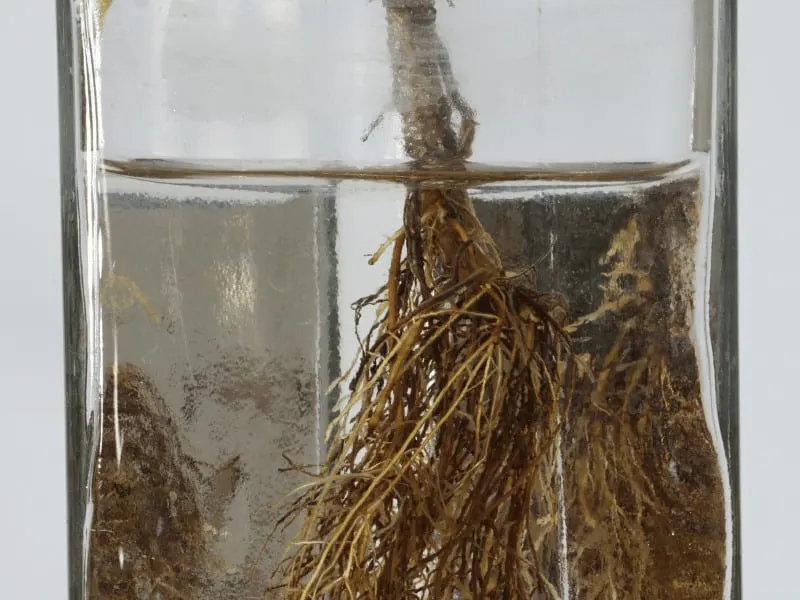
5. Planting the rooted tomato cuttings
After around a week, you should see signs of root growth on your tomato plant cuttings.
The tomato cutting should have grown several inches (cm) long roots within two weeks. It is now ready to be transplanted into soil.
I would suggest using a potting soil with high draining qualities, such as a soil-gravel mix, or loose soil like sandy loam.
Fill a pot with drainage holes of around 15-20 inch diameter with the soil mix, leaving a small hole in the middle to place your cloned tomato plant.
Finally, place your tomato plant into the pot and lightly pat excess soil around it.
From here, you can start to harden off your tomato plant in preparation for moving it into your garden.
During warmer periods of the day, take your tomato plant outside for a few hours and place it in indirect sunlight.
After around two weeks of repeating this, your tomato plant should have adjusted well enough to grow outside with your other plants.
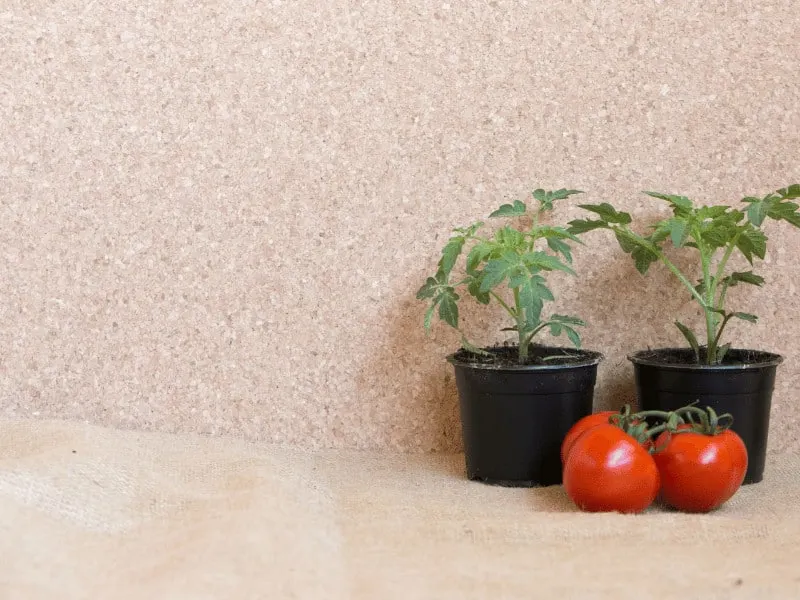
Frequently Asked Questions Regarding Cloning Tomato Plants
How many times can you clone a tomato plant?
I would suggest not taking any more than 2-3 cuttings from each parent tomato plant, as this could result in damage being caused to your plant.
Can you grow tomatoes from fruit seeds?
Though growing tomatoes from cuttings are much more convenient, it is possible to grow tomato plants from the seeds of their fruits. However, this process will not create a clone of your plant and is the same as buying packeted seeds from a store.
Takeaways
To clone tomato plants:
- Get a clean, sharp knife
- Cut the main stem below a node
- Add rooting hormone to the cutting
- Put the cutting into water
- Plant the cutting into the soil once the roots are several inches long

Daniel has been a plant enthusiast for over 20 years. He owns hundreds of houseplants and prepares for the chili growing seasons yearly with great anticipation. His favorite plants are plant species in the Araceae family, such as Monstera, Philodendron, and Anthurium. He also loves gardening and is growing hot peppers, tomatoes, and many more vegetables.


